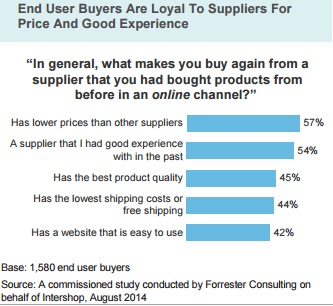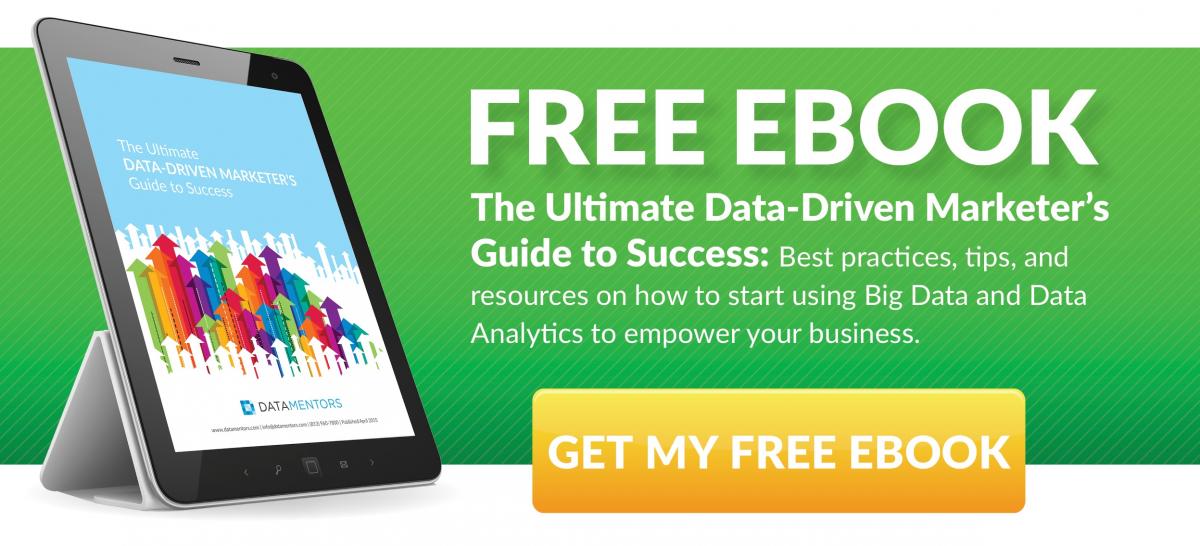The number of B2B buyers who purchase goods online is growing – up from 57% in 2013 to 68% in 2014 according to new research from Accenture Interactive. To accommodate online shoppers, 86% of B2B organizations now offer online purchasing options.
The research was based on data collected from a survey of 500 procurement officers with budgets exceeding $100,000. Additional findings include:
- B2B buyers who spent 90% or more of their budgets online in the last year doubled from 2013 levels, from 9% to 18%
- Only 48% of B2B buyers surveyed purchase goods online directly from suppliers, with the rest using third-party websites or other purchasing channels.
- 94% of B2B buyers say they conduct some form of online research before purchasing a business product.
- 40% of buyers research more than half of the goods they purchase under $10,000 online. For larger corporate purchases of more than $5,000, 34% spend over three hours researching products.
The B2B ecommerce market is growing quickly. In the U.S. it’s more than twice the size of online retail and is projected to reach $1.1 trillion in the next five years, according to forecasts by Forrester Research Inc.
While B2B companies of all sizes are recognizing the growing importance of ecommerce, some of the largest companies have already made huge inroads into online selling. The recently released 2016 B2B E-Commerce 300 report ranks the 300 largest manufacturers, wholesalers, distributors and retailers by their annual B2B e-commerce sales. The companies on the list include industry leaders such as Boeing Corp., Nike Inc., ExxonMobil Corp. and Grainger Inc., and make up around 70% of the total B2B e-commerce market in the United States.
Understanding the B2B Online Buyer
The B2B online buyer values the online experience and is primarily looking for speed and convenience above all else. The traditional procurement process may be too slow or cumbersome, and this buyer wants efficiency and transparency to pricing and products. When a positive experience is delivered, over half of end user buyers are loyal to online suppliers. According to a commissioned study conducted by Forrester Consulting on behalf of Intershop, 54% of end user buyers would purchase again based on a good experience.
The study also revealed that 73% of B2B buyers value pricing information the most when making an online purchase. They seek a vendor who is transparent about delivery costs (53%) and expected delivery (44%). They also want visibility into stock availability (49%).
When researching vendors, rich content is the key to making the decision to purchase online and from which vendor. According to the report, “Twenty-eight percent of end user buyers consider a supplier when the supplier provides the right technical information. They expect suppliers to share specification sheets (61%) and instruction manuals (46%). They also expect to see rich media content, as 38% of end user buyers find video content helpful when making purchases online.”
Leverage Data to Understand Your Audience
While there is plenty of research as referenced above on what the typical B2B online buyer looks like, marketers must dig in deeper to understand what their company’s unique buyers look like. By leveraging both internal and external data, businesses can understand the demographic and firmographic make-up of their prospects, including channel preferences and buying behaviors.
This data can be used to create buyer personas, which have been used for some time by marketers to understand buying behaviors. This typically includes looking at a range of data such as:
- Firmographics – What industry do they work in? What is the size of their company?
- Favorite Websites – Why type of websites do people in this persona frequently visit?
- Buying Motivation – What is this persona’s reason for buying your product?
- Buying Concerns – What is this persona’s concerns when buying your product?
- Communication – What are their channel preferences?
Another method is to use buyer predictive modeling to better understand buyer choices and scenarios. Based on historical behaviors and a variety of internal and external data, businesses can create targeted strategies for prospects based on who they are, what they are likely to buy, and how they will buy it.
Provide a Great Experience
The online B2B buyer is looking for a great experience, similar to the B2C shopping experience. Speed and convenience are two huge factors that B2B buyers are looking for as part of the purchase experience. This means that your catalogs must do digital so buyers can read about product specifications, zoom in on pictures, and watch videos. Be sure to also include customer reviews on items. An easy check-out process and access to customer service will also help buyers more easily transition from traditional buying methods to online purchasing.
B2B online purchasing is going to become more commonplace in the future. Catering to these buyers now by creating an integrated ecommerce platform will set you up for great success and bigger revenue.
To learn how to target prospects and customers online through data-driven strategies, download this free eBook on B2B data-driven marketing best practices.
Read more:


